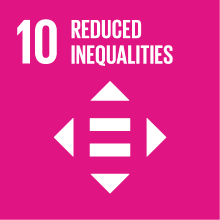COMPARATIVE HISTORY OF CONTEMPORARY ART
- Academic year
- 2023/2024 Syllabus of previous years
- Official course title
- STORIA COMPARATA DELL'ARTE CONTEMPORANEA
- Course code
- FM0426 (AF:444426 AR:249903)
- Teaching language
- Italian
- Modality
- On campus classes
- ECTS credits
- 6
- Degree level
- Master's Degree Programme (DM270)
- Academic Discipline
- L-ART/03
- Period
- 3rd Term
- Course year
- 1
- Moodle
- Go to Moodle page
Contribution of the course to the overall degree programme goals
Expected learning outcomes
Students will acquire an in-depth knowledge of a series of questions related to the history and theory of contemporary art, with a special focus on environmentalism, postcolonialism, feminism, gender and queer, posthumanism.
2. Capacity of applying knowledge and understanding:
Students will learn how to relate the history and theory of contemporary art with recently developed field of research – especially environmental, postcolonial, gender and posthuman studies. Each student will be asked to critically present and discuss one of the texts from the exam bibliography (of their choice) in front of their classroom and professor.
3. Capacity of formulating judgments:
Students will learn how to develop original or partly original ideas and how to elaborate a critical judgment concerning certain aspects of the history and theory of contemporary art, with a special focus on the topics discussed during the course.
4. Communicational skills:
Within the framework of seminar-like discussions, students will learn how to articulate ideas with the appropriate language and share them with the professor and fellow students.
5. Learning skills:
Students will acquire the appropriate conceptual and analytical skills that will allow them to analyse the issues discussed in class. They will learn how to study and discuss written texts, and how to express their own critical judgment by presenting one of the texts of the exam bibliography (of their choice) in front of their classmates and professor.
Pre-requirements
Contents
Referral texts
History/es of Contemporary Art
• A. Alberro, [‘Questionnaire on “The Contemporary”’], "October", vol. 130 (Autumn 2009), pp. 55-60.
• T. Smith, ‘Contemporary Art and Contemporaneity’, "Critical Inquiry", vol. 32, no. 4 (Summer 2006), pp. 681-707.
• G. Pollock, ‘Feminist Interventions in the Histories of Art: An Introduction’, in “Vision and Difference: Feminism, Femininity and the Histories of Art”, Routledge, London-New York, 2003 (1st ed. 1988), pp. 1-24.
Postcolonial, environmental, gender, posthuman
(Postcolonial)
• Okwui Enwezor, ‘The Postcolonial Constellation: Contemporary Art in a State of Permanent Transition’, in "Research in African Literatures", vol. 34, n. 4 (inverno 2003), pp. 57-82.
• G. Grechi, ‘Introduzione. Decolonizzare come verbo’, in “Decolonizzare il museo: mostrazioni, pratiche artistiche, sguardi incarnati”, Mimesis, Milan-Udine, 2021, pp. 15-42.
• A. Mbembe, ‘What is Postcolonial Thinking?’, trans. by J. Fletcher, in “Eurozine”, 9 January 2008 (French ed. 2006); https://www.eurozine.com/what-is-postcolonial-thinking/
(Environmental)
• T.J. Demos, ‘Decolonizzare la natura’, "Kabul Magazine", 2021, pp. 51-58 (first ed. 2018; Eng. ed. 2016)
• B. Latour, ‘L’agency ai tempi dell’Antropocene’, "Kabul Magazine", 2021, pp. 19-25 (first ed. 2018; Eng. ed. 2014).
• D. Haraway, ‘Antropocene, Capitalocene, Piantagionocene, Chthulucene: creare kin’, "Kabul Magazine", 2021, pp. 34-42 (1st ed. 2018; Eng. ed. 2016)
• T. Morton, ‘Ecologia Queer’, "Kabul Magazine", 2021, pp. 87-104 (1st ed. 2018; Eng. ed. 2010).
• A. Pardo, ‘Reweaving the Web of Womanist Ecopolitics’, in “Re/Sisters: A Lens on Gender and Ecology”, exh. cat. (Barbican Art Gallery, London, 05.10.2023-14.01.2024), Prestel, Munich-London-New York, pp. 15-24.
(Posthuman)
• R. Braidotti, ‘La condizione postumana’, "Il postumano", vol. 2 (Saperi e soggettività), DeriveApprodi, Rome, 2022 (Eng. ed. 2019), pp.13-50.
• R. Braidotti, ‘Introduzione – La molteplicità: un’etica per la nostra epoca, oppure meglio cyborg che dea’, "Donna Haraway, Manifesto Cyborg. Donne, tecnologie e biopolitiche del corpo", Feltrinelli, Milan, 2021 (1st ed. 1995; Eng. ed. 1991), pp. 9-38.
• T. Macrì, ‘Il corpo postumano’, "Il corpo postorganico", Costa&Nolan, Genoa-Milan, 2006 (1st ed. 1996), pp. 49-80.
(Gender)
• L. R. Lippard, ‘Projecting a Feminist Criticism’, "Art Journal", vol. 35, no. 4 (Summer 1976), pp. 337-339.
• Carla Lonzi, "Autoritratto", et al./Edizioni, Milan, 2010 (first ed. 1969) [only pp. VII-XV e pp. 3-6].
• L. Nochlin, ‘Why Have There Been No Great Women Artists?’, "Art and Sexual Politics: Why Have There No Great Women Artists?", ed. by T. B. Hess, Elizabeth C. Baker, Collier Books, New York, 1973, pp. 1-39.
Non-attending students, those who skip more than 30% of the lessons, and those who attended the course of Contemporary Art II in 2022/23 will prepare, in addition to the programme indicated above, one of the following books of their choice:
• G. Bindi, "Arte, ambiente, ecologia", postmedia books, Milan, 2019.
• N. Bourriaud, "Inclusioni. Estetica del Capitalocene", postmedia books, Milan, 2020.
• G. Galati, "Duchamp Meets Turing. Arte, modernismo, postumano", postmedia books, Milan, 2017.
• A. Maderna, "L’altra metà dell'avanguardia quarant'anni dopo", postmedia books, Milan, 2020.
• P. Ugolini, “Artiste e femminismo in Italia”, Christian Marinotti Edizioni, Milan, 2022.
• C. Subrizi, “La storia dell’arte dopo l’autocoscienza. A partire dal diario di Carla Lonzi”, Lithos, Rome, 2020.
• E. Vannini (ed.), “Femminismi contro: pratiche artistiche e cartografie di genere”, Meltemi, Milan, 2023.
NB: Please contact the professor for specific requests.
Assessment methods
Type of exam
Teaching methods
Further information
Ca’ Foscari follows the Italian law (Law 17/1999; Law 170/2010) for the support and accommodation services available to students with disabilities or specific learning disabilities. If you have either a motor, visual, hearing or another disability (Law 17/1999), or a specific learning disorder (Law 170/2010) and you require support (classroom assistance, technological aids for carrying out exams or personalized exams, accessible format material, note retrieval, specialist tutoring as study support, interpreters or other), please contact the Disability and DSA office disita@unive.it.
2030 Agenda for Sustainable Development Goals
This subject deals with topics related to the macro-area "Poverty and inequalities" and contributes to the achievement of one or more goals of U. N. Agenda for Sustainable Development




